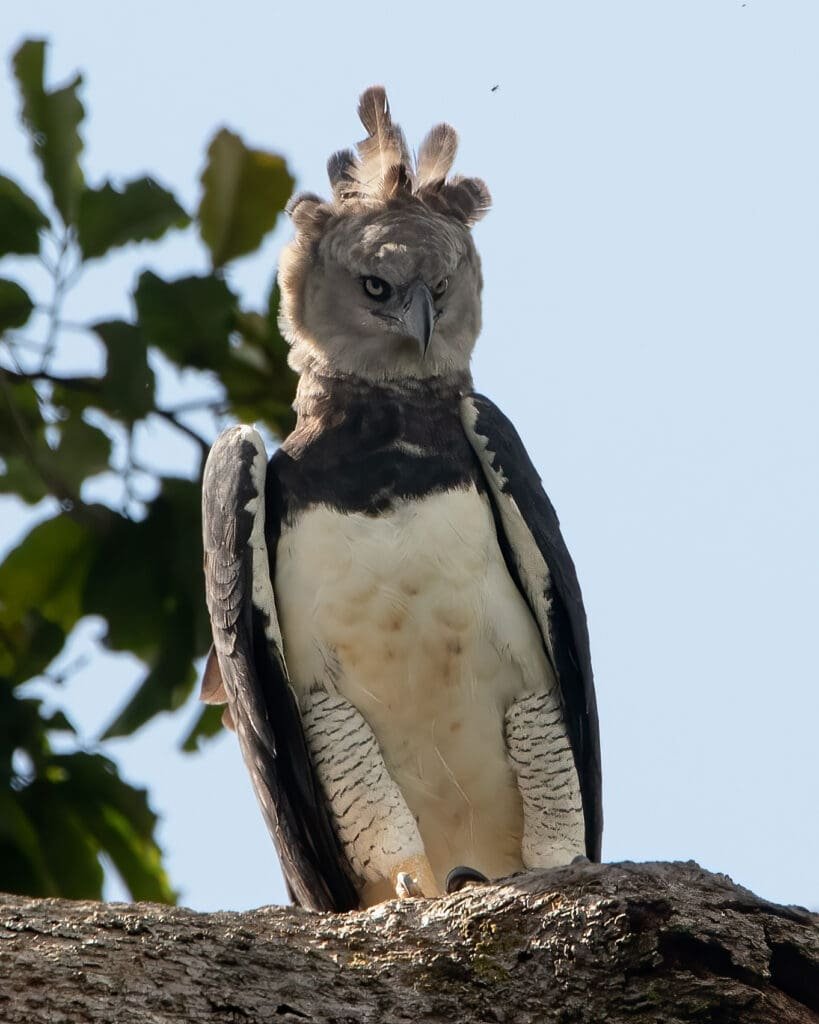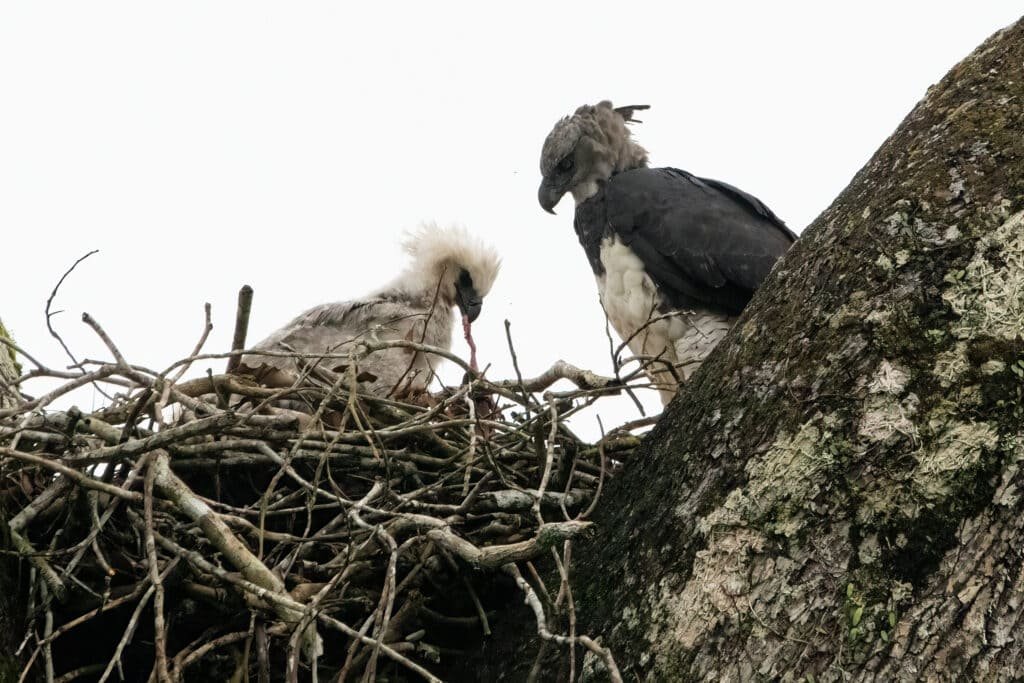Harpy Eagle: The World’s Strongest Bird of Prey
The Harpy Eagle (Harpia harpyja) is one of the largest and most powerful birds of prey in the world, even bigger than the Golden Eagle. This eagle is famous for its striking look and incredible strength. It primarily lives in the rainforests of Central and South America, ranging from southern Mexico to northern Argentina and Brazil. Named after the harpies from Greek mythology, which are bird-like creatures with human faces, it is also referred to as the American Harpy Eagle to differentiate it from the Papuan Eagle, which may be called the Papuan Harpy Eagle or the New Guinea Harpy Eagle.

Physical Characteristics
The Harpy Eagle is one of the largest and strongest eagles. Females are bigger than males, reaching lengths of up to 3.5 feet (107 cm) and a wingspan of 7.5 feet (224 cm). They typically weigh between 13 and 20 pounds (6 to 9 kilograms). Their notable features include a dark gray to black back, a white underside, and a black chest. They have a unique double crest of feathers on their heads that can be raised, giving them a regal appearance.

The facial disc of the Harpy Eagle is an important adaptation that helps it hunt effectively in rainforests and low light. The rounded feathers around its mouth help channel sound to its ears, allowing it to locate prey by sound in dim conditions. Its short wings and long tail improve its ability to maneuver quickly and accurately through dense vegetation. These traits, along with sharp hearing and strong talons, make the Harpy Eagle a skilled predator in its rainforest environment.

Like other raptors, Harpy Eagles have very strong legs, feet, and talons. They have four toes on each foot, with the largest talon on the hind toe measuring 7-10 cm (3-4 inches) in diameter, comparable to a grizzly bear’s claws! These powerful talons enable the Harpy Eagle to lift prey that weighs as much as itself.
Diet and Hunting
As apex predators, Harpy eagles primarily hunt sloths, opossums and monkeys. These eagles are known for their stealth, gliding silently through the forest despite their 6.5 feet (2 m) wingspan.To conserve energy, they avoid long flights, conserving their energy for catching and lifting animals up to 17 pounds.

Rather than chasing their prey, Harpy Eagles prefer to sit patiently, waiting for their prey to come within striking distance. This method, along with their great strength, makes them highly skilled hunters.
Nesting
Harpy Eagles are known to mate for life and are very protective of their territory. After a suitable partner is found, they build large nests in some of the tallest trees in the forest. This nest is made of sticks and can be reused for several years. The female lays 1-2 eggs, but usually only one chick hatches. The eggs take about 55 days to hatch, and the eaglet fledges at around 5 to 6 months.

Even after leaving the nest, the young eagle still relies on its parents and stays in their territory for 1.5 to 2 years or longer. Because of this long period of care, a pair of Harpy Eagles raises only one chick about every 2-3 years.

Once the young eagle leaves the nest, it faces new challenges in the wild as it learns to survive on its own. Harpy Eagles reach sexual maturity in about 5 years and can live for 25-35 years in the wild.
Conservation Status
The Harpy Eagle is listed as “Near Threatened” on the IUCN Red List due to habitat loss, hunting, and deforestation, which are the primary threats to its survival. They are particularly vulnerable because of their need for large territories and their slow reproduction rate. Conservation efforts include habitat preservation, captive breeding programs and environmental education to protect these magnificent species.
Cultural Significance
In myths and stories, the Harpy Eagle is linked to the harpies from Greek tales, which are fearsome creatures with the body of a bird and the face of a woman. Although the Harpy Eagle only shares a name with these mythical figures, its strong reputation and hunting skills reflect the idea of a powerful creature in nature.

In many native cultures of South America, respected Harpy Eagle as a powerful spiritual symbol. It’s often seen as a messenger of the gods or guardian of the forest, embodying strength, freedom and vision. Some indigenous tribes believe the eagle can connect the physical world to the spiritual one, acting as a link between humans and the divine.
The Harpy Eagle’s role in various cultures goes beyond its biological importance, it symbolizes the wild, stands for strength, and highlights the deep connection between nature and human culture.




Nice i really enjoyed reading your blogs. Keep on posting. Thanks